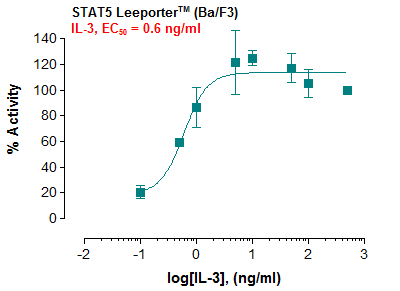Recombinant Mouse Poliovirus Receptor/PVR/CD155 (C-6His)(Discontinued)
Shipping Info:
For estimated delivery dates, please contact us at [email protected]
| Amount : | 50 µg |
| Content : | Lyophilized from a 0.2 µm filtered solution of PBS, pH7.4. |
| Storage condition : | Lyophilized protein should be stored at -20°C, though stable at room temperature for 3 weeks. Reconstituted protein solution can be stored at 4-7°C for 2-7 days. Aliquots of reconstituted samples are stable at -20°C for 3 months. |
| AA sequence : | DIRVLVPYNSTGVLGGSTTLHCSLTSNENVTITQITWMKKDSGGSHALVAVFHPKKGPNIKEPERVKFLAAQQDLRNASLAISNLSVEDEGIYECQIATFPRGSRSTNAWLKVQARPKNTAEALEPSPTLILQDVAKCISANGHPPGRISWPSNVNGSHREMKEPGSQPGTTTVTSYLSMVPSRQADGKNITCTVEHESLQELDQLLVTLSQPYPPENVSISGYDGNWYVGLTNLTLTCEAHSKPAPDMAGYNWSTNTGDFPNSVKRQGNMLLISTVEDGLNNTVIVCEVTNALGSGQGQVHIIVKEKPENMQQNTRLHLHHHHHH |
Source: Human Cells.
MW :35.6kD.
Recombinant Mouse Poliovirus Receptor is produced by our Mammalian expression system and the target gene encoding Asp29-Leu348 is expressed fused with a 6His tag at the C-terminus. Mouse poliovirus receptor (PVR, CD155) is a type I transmembrane (TM) glycoprotein that is a member of the nectin-related family of adhesion proteins within the immunoglobulin superfamily. It binds other molecules including vitronectin, Nectin3, DNAM1, CD96, and TIGIT, but does not bind homotypically. CD155 includes a 28 aa signal sequence, a 318 aa extracellular domain (ECD) with one N-terminal V-type and two C2-type Ig-like domains, a 24 aa TM segment and a 38 aa cytoplasmic tail. Epithelial, endothelial, and many immune cells show low CD155 expression. It is up-regulated on endothelia by IFN gamma , and is highly expressed on immature thymocytes, lymph node dendritic cells, and tumor cells of epithelial and neuronal origin. On migrating cells, it is concentrated at the leading edge, where it binds basement membrane vitronectin, recruits Nectin-3-expressing cells, and cooperates with PDGF and integrin alpha v beta 3 to promote cell migration. Binding of monocyte DNAM-1 to endothelial cell CD155 promotes transendothelial migration. Enhanced CD155 expression in tumor cells contributes to loss of contact inhibition and increased migration, but also allows tumor cell recognition and killing by DNAM-1or CD96 expressing NK cells.
MW :35.6kD.
Recombinant Mouse Poliovirus Receptor is produced by our Mammalian expression system and the target gene encoding Asp29-Leu348 is expressed fused with a 6His tag at the C-terminus. Mouse poliovirus receptor (PVR, CD155) is a type I transmembrane (TM) glycoprotein that is a member of the nectin-related family of adhesion proteins within the immunoglobulin superfamily. It binds other molecules including vitronectin, Nectin3, DNAM1, CD96, and TIGIT, but does not bind homotypically. CD155 includes a 28 aa signal sequence, a 318 aa extracellular domain (ECD) with one N-terminal V-type and two C2-type Ig-like domains, a 24 aa TM segment and a 38 aa cytoplasmic tail. Epithelial, endothelial, and many immune cells show low CD155 expression. It is up-regulated on endothelia by IFN gamma , and is highly expressed on immature thymocytes, lymph node dendritic cells, and tumor cells of epithelial and neuronal origin. On migrating cells, it is concentrated at the leading edge, where it binds basement membrane vitronectin, recruits Nectin-3-expressing cells, and cooperates with PDGF and integrin alpha v beta 3 to promote cell migration. Binding of monocyte DNAM-1 to endothelial cell CD155 promotes transendothelial migration. Enhanced CD155 expression in tumor cells contributes to loss of contact inhibition and increased migration, but also allows tumor cell recognition and killing by DNAM-1or CD96 expressing NK cells.
Endotoxin : Less than 0.1 ng/µg (1 IEU/µg) as determined by LAL test.
For Research Use Only. Not for use in diagnostic/therapeutics procedures.
|
There are currently no product reviews
|




















.png)








